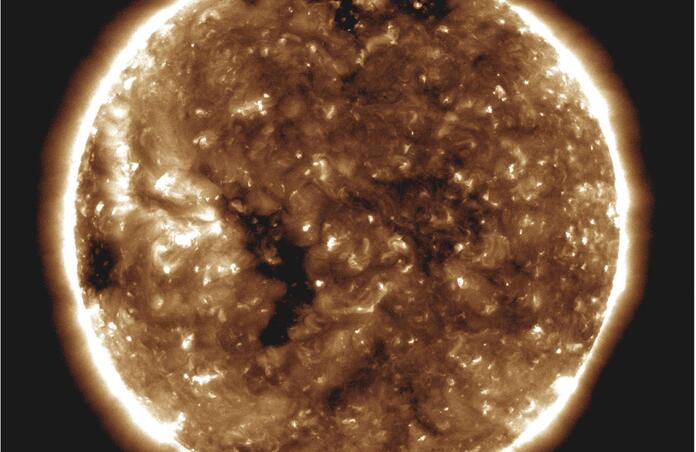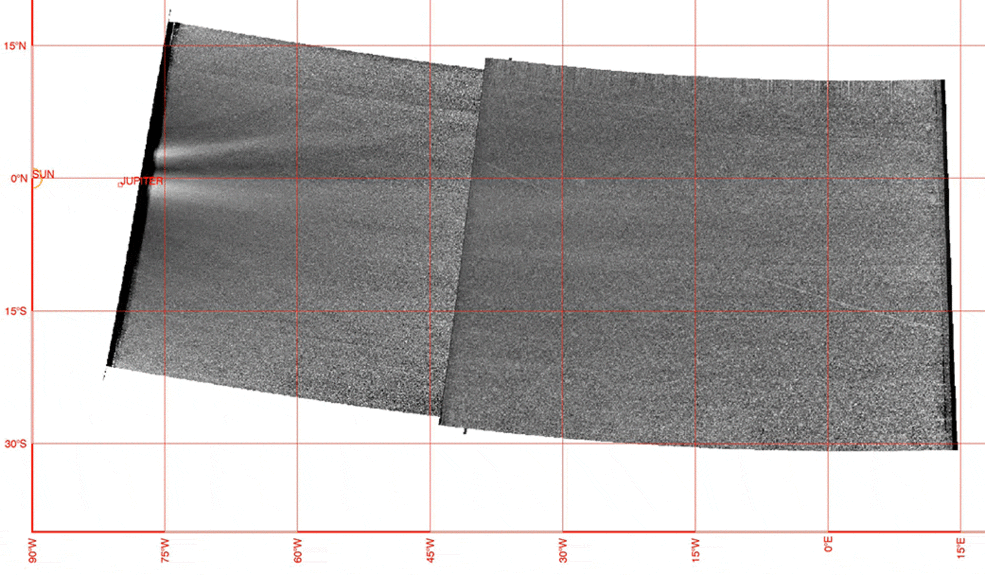Insight into the Solar Atmosphere

On November 11th, 2019, the NASA Parker Solar Probe (PSP) successfully completed its third rotation around the Sun, in an ongoing effort to collect detailed data about the heliosphere region. The probe is the closest any spacecraft has come to the Sun, which allows the onboard instruments up-close access to its structure and inner workings. PSP is set to make 24 orbits before ending its mission, with eventual iterations moving the probe closer and closer to the Sun. Despite only being two years into its journey, PSP is already providing a great deal of valuable data.
Launched in August 2018, PSP set out with three goals: “(1) trace the flow of energy that heats and accelerates the solar corona and solar wind; (2) determine the structure and dynamics of the plasma and magnetic fields at the sources of the solar wind; and (3) explore mechanisms that accelerate and transport energetic particles.” Though these goals are the primary intention of the probe, it is exploring an entirely untapped area of our solar system—meaning the data collected could lead to a wide variety of different scientific discoveries.
The Data PSP Captured
PSP has a total of four onboard instruments, FIELDS, SWEAP, WISPR, and IS⊙IS. FIELDS studies electromagnetic fields, SWEAP measures plasma readings, WISPR is an imaging instrument, and IS⊙IS handles observation of particle acceleration. So far, the probe’s various instruments have captured a wealth of structures in the solar wind, including coronal mass ejections (CME’s), the heliospheric current sheet, and corotating interaction regions (CIRs). PSP has also recorded a plethora of “dynamic phenomena,” which include “turbulent cascades, magnetic reconnection and plasma waves and instabilities.”

Animation of data collected by the WISPR instrument onboard PSP. On the left of the animation is the Sun, and Jupiter is highlighted in red. Credit Naval Research Laboratory/Johns Hopkins Applied Physics Lab
The craft was initially launched during what is known as a deep solar minimum, or a time when there is very scarce solar activity. However, its instruments have already gathered far more detailed insight into solar wind dynamics in the innermost regions of the heliosphere than originally anticipated, giving researchers high hopes for its future findings. Aside from the valuable data collected by FIELDS, SWEAP, and IS⊙IS, the probe’s onboard imaging system, WISPR, is effectively changing our physical picture of the Sun—especially compared to previous data collected from spacecraft much farther away.
PSP’s Future Possibilities
Over the past year alone, the Parker Solar Probe has provided a veritable mountain of data for researchers to delightfully comb-over. At its current rate of return—and considering it’s the first craft to have such a close view of the Sun—it’s certainly possible that other unintended and essential discoveries will be made along the way. During its next 21 rotations, as it grows ever closer to the Sun’s surface, the data collected from PSP is bound to provide incredible insight into the world of solar dynamics!
References
Exploring
the innermost solar atmosphere: https://doi.org/10.1038/s41550-019-0985-7
Parker Solar Probe